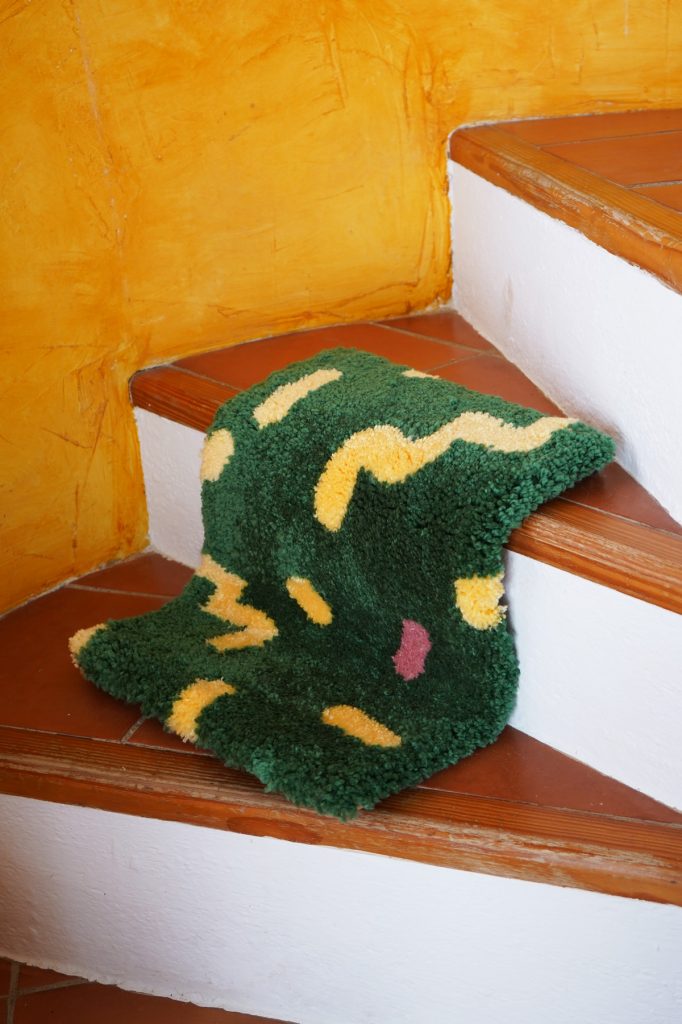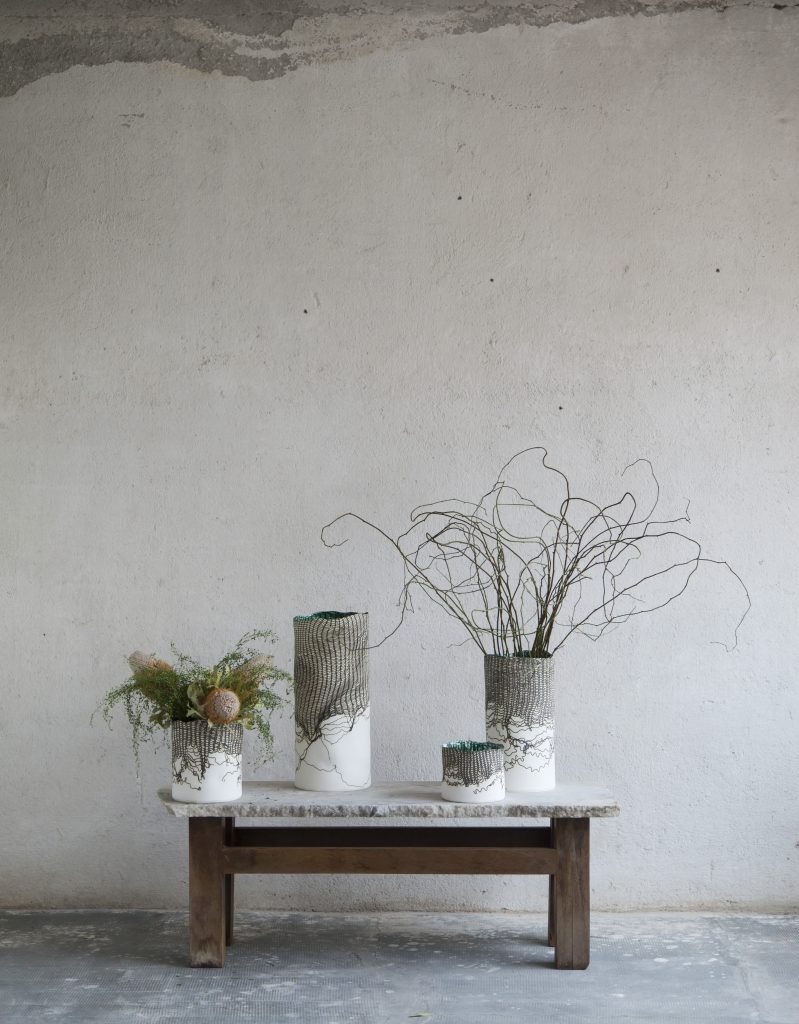

“BACK TO BASICS”: Spain at Virtual Design Destination 2020
“The ‘back to basics’ mood was something that occurred naturally, it was a feeling of running away from anything artificial or ‘fantastic’, I felt the need to look at more human, more down to earth work.”
– Ana Domínguez Siemens, curator of the Spanish collection, “BACK TO BASICS”
“BACK TO BASICS” is part of the Virtual Design Destination presented by Adorno at London Design Festival, 12 – 20 September 2020. Join us for a tour of the virtual environment and collection with curator Ana Domínguez Siemens in conversation with Kristen de la Vallière of @sayhito_ on Sunday, 20 September at 15:00 PM BST. “BACK TO BASICS” is kindly supported by the Acción Cultural Española (AC/E), Museo Nacional de Arte Romano, & Cosentino.
Entering into the long, main hall of Museo Nacional de Arte Romano, we take in the inspiring architecture created by Spanish architect Rafael Moneo Vallés. Repeating brick arches, reminiscent of classical Roman architecture, rise ahead of us, with recesses hidden in between. Presented along the centre of this space is a unique collection of pieces whose bright colours and inspired forms are juxtaposed with the history of those usually on display here. Upon closer look, each designers’ focus on craftsmanship and attention to detail come into view, aligning them with makers of previous generations. It is in this similarity of craft, material, and technique that collectible design mirrors the basics of long held design traditions – while still allowing generous space for contemporary makers to find their own voice and individual style.
The Spanish collection, “BACK TO BASICS“, curated by Ana Dominguez Siemens, draws on the moment of reflection created by the pandemic to investigate the necessary movement towards basics and sustainable design. The coming together of traditional craft and contemporary design is one which pervades many contemporary design scenes, with Spain as no exception. This collection presents this intersection in terms of core innovation: how are designers making use of these “basic” materials, techniques, and forms? How are they developing innovative approaches within these spaces? How are they making them better? From the re-imagination of materials, to new views of craft production, to innovations of recognisable forms, “BACK TO BASICS” presents a method to address the current uncertainty of the design world, a method to strip back the excess, reflect on what is most important, and develop solutions for the immediate moment.
“BACK TO BASICS” features work by Álvaro Catalán de Ocón, Belen Moneo, Ines Sistiaga, Inma Bermudez, Júlia Esqué, Lucas Muñoz, Martí Guixé, MAYICE Studio, Studio La Cube, Studio Todo To Do, and Tornasol Studio.
BACK TO BASICS
What are the main themes presented across the works in this collection?
There is a seeking for innovation within the realm of heritage and tradition; there is a lot of re-using or recycling materials; there is some spontaneity in the way bits and pieces are put together… and there is a little political statement too.


Which three words would you use to describe the contemporary design scene in Spain?
Intriguing, ingenious, exciting, and, at times, provocative.
Why have you chosen the scenography of Museo Nacional de Arte Romano for this collection?
[The Museo Nacional de Arte Romano] is an amazing example of how to use a traditional material and language in an innovative way. It is a masterpiece of contemporary architecture by Pritzker Prize winner Rafael Moneo [which] speaks of heritage in a modern way and it was a perfect set for this collection.


Belen Moneo, “Emérita” 

Tornasol Studio, “Drift” Chair
The idea of “basics” in design can refer to material, technique, and form, among others. Which aspects of the participating designers’ practices reflect this turn of going “back to basics”?
In fact, all of those aspects were in my mind when I chose [these] designers, I chose pieces that could show that kind of diversity and [different] interpretations on the subject.
A number of pieces in this collection make use of upcycled materials – for example, “Tubular Chair”, “Respect Cheap Furniture”, and “Vase 1+2+3”. How do you think this “new reality” will influence sustainability in design?
Sustainability was already a reality in the design world, both industrial design or collectible design. We need to be very careful with what we put on the planet and designers have a high degree of responsibility regarding that matter. Obviously, it is not the same to produce a million products industrially [instead of] a limited series of 5 pieces, but, even so, the message is still present, at least conceptually.


Lucas Muñoz, “Tubular Armchair” 

Studio Todo To do, “Obreras I” & “Obreras II” Vases
With reference to the Virtual Design Destination’s theme, how does this collection respond to the so-called “New Reality”?
There is [the desire to seek] innovation within the realm of heritage and tradition; there is a lot of re-using or recycling of materials; there is some spontaneity in the way bits and pieces are put together; and there is a little political statement too.


Has your approach to the curation of this collection been affected by the ongoing uncertainty in the world? Why or why not?
Yes, of course, being in confinement was, for me, a moment of a complete stop of my activity. It had never happened to me before, it was – it is – totally new. Many people turned to social media to keep up being seen, [this] was not my case, I kind of isolated and took time to think and “feel”. The “back to basics” mood was something that occurred naturally, it was a feeling of running away from anything artificial or “fantastic”, I felt the need to look at more human, more down to earth work. And always not sacrificing the creativity everyone brings.


Meet Ana Domínguez Siemens
Ana Domínguez Siemens is a Madrid-based curator, writer, and freelance journalist. Following her degree in Art History from Madrid’s Universidad Complutense (1986), she enrolled in the “Decorative Arts of the 19th and 20th Centuries” program at Sotheby’s Art Institute in London.
As a curator, she has conceived and produced exhibitions including “Fuera de Serie” at the CentroCentro Cibeles in Madrid, 2013, and co-curated the 2015 exhibition “Out of place,” a project by art curator Rosa Pera, for the Disseny Hub Barcelona during Festival FadFest.
Domínguez Siemens writes regularly for international publications including ABC Cultural, La Vanguardia, Elle Decoration, Neo2, AD, Gentleman, Marie Claire Maison, Houzz, El País (El Viajero), Azure (Canada) and World of Interiors (UK). She has written text for books and catalogues about international figures in art and design, including Gaetano Pesce, Rolf Sachs, Gunjan Gupta, Álvaro Catalán de Ocón, Michael Anastassiades, Fredrikson/Stallard, Anton Alvarez and Artur Casas.
Which aspects of curating a collection for a virtual exhibition have intrigued and/or surprised you?
No surprises there! For me, it has been a normal process as in any other exhibition; you need to think, you need to remember things you have seen, and you have to make the right connections. I would say the real surprise is when you finally see all the pieces together and [that moment] is when you confirm that your hypothesis was right and might even get a surprise discovering some details you had not thought of.
What are you most excited to share (ex. thematically, a piece, a designer, etc.) with the Virtual Design Destination audience?
All of the designers in the exhibition are people I follow with interest and I am happy to endorse their work as much as I can. But, I am particularly happy to have Martí Guixé in the show. He is a designer I admire and respect. His “Respect Cheap Furniture” chair is now an icon!




















Responses